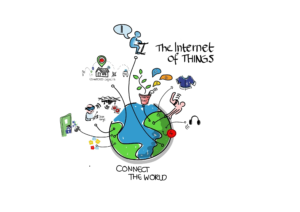The Evolution of Smartphones From Past to Future Trends

The evolution of smartphones has been nothing short of remarkable, transforming how we connect, work, and experience the world around us. From the bulky bricks of the past to the sleek, powerful devices of today, smartphones have become an integral part of modern life. This article delves into the fascinating journey of smartphones, tracing their historical development and examining the exciting future trends shaping this technology. We’ll explore the key milestones that marked the rise of the smartphone, identifying the problems that early models addressed, and discuss the innovative solutions that have propelled smartphone evolution. The structure of this article is as follows: a detailed look at the early years of smartphones; an exploration of the key innovations that have led to today’s smartphones; an investigation into the future trends driving the evolution of smartphones, and concluding with a discussion of the transformative impact of this technology. Prepare to be amazed by the journey that has brought us to the cutting edge of smartphone technology.
1. Early Days of Mobile Communication: Laying the Foundation
1.1 The Genesis of Mobile Phones
The quest for portable communication dates back to the early days of radio technology. The first mobile phones, though far from the sleek devices we know today, were bulky and limited in functionality. These early models were largely expensive and primarily used by businesses and the elite. The weight of these early models, often exceeding a pound, often prevented the average consumer from using them on a regular basis. The limited functionality also hampered the mainstream adoption of mobile phones, largely used as expensive tools for communication in an urgent need.
1.2 The Transition to Portability
Technological advancements gradually led to a reduction in the size and cost of mobile phones. The 1970s and 80s witnessed a slow but steady decrease in size and weight. Further advancements in battery technology, circuit design, and material science facilitated the creation of handheld mobile phones. Examples such as the Motorola DynaTAC 8000x demonstrate a gradual transformation from large-scale equipment to handheld devices.
1.3 The Dawn of Cellular Networks
The development of cellular networks was instrumental in enabling mobile phone users to communicate seamlessly across wider geographical areas. This technological progress transformed mobile phones from primarily localized devices to tools for extensive use. The initial cellular networks, with their limitations and higher cost, were only accessible to a niche segment of the population. By the 1990s, the demand for more reliable and widespread cellular services spurred further investment in infrastructure, paving the way for a wider adoption.
1.4 Limited Functionality: The Early Mobile Phone Experience
Early mobile phones were confined to basic functionalities like voice calls. The lack of advanced features limited their utility compared to modern smartphones. The rudimentary interface and small screens often created challenges in communication, and limited user experience.
2. The Rise of Smartphones: Revolutionizing Communication
2.1 The Emergence of the Smartphone Concept
The concept of integrating mobile phones with computing power began gaining traction in the late 1990s. Pioneering companies started experimenting with the idea of merging mobile phone features with internet connectivity and sophisticated applications. These early attempts laid the groundwork for the advanced smartphones of today. One of the key characteristics of these early phones was the incorporation of a touchscreen interface.
2.2 The First Generation Smartphones: Limited Innovation
Early smartphones often suffered from limitations in computing power and software capabilities. The initial market uptake was limited as a result. While they offered internet access and rudimentary applications, they were often not as user-friendly as modern smartphones. These early devices were considered more of a specialized tool than the universal tool they would become later.
2.3 The iPhone and its Impact
The introduction of the iPhone in 2007 marked a significant turning point in smartphone evolution. The iconic touchscreen design and intuitive user interface revolutionized user experience, leading to the wide-scale adoption of smartphones. The iPhone’s innovative touch screen technology and the incorporation of advanced features, such as a web browser and a multimedia player, set a new standard for mobile devices.
2.4 The Android Revolution: Competition and Innovation
The release of the Android operating system spurred intense competition in the smartphone market. Android’s open-source nature fostered innovation and encouraged developers to create a wide range of applications, catering to diverse needs and preferences. The availability of various configurations and customization options fostered a wave of diverse options in the market.
3. The Future of Smartphones: Trends and Predictions
3.1 Enhanced Connectivity: 5G and Beyond
The rollout of 5G networks is expected to further enhance smartphone connectivity. Faster data transfer speeds and improved latency are expected to transform various applications like online gaming, video streaming, and virtual reality experiences. The seamless integration of 5G and other high-speed networks is anticipated to revolutionize user experiences.
3.2 Augmented Reality and Virtual Reality Integration
Smartphones are increasingly incorporating augmented reality (AR) and virtual reality (VR) capabilities. This integration allows users to interact with digital content in a more immersive way, creating exciting possibilities in gaming, education, and entertainment. AR and VR features are expected to have a profound impact on the creative industries.
3.3 The Rise of Foldable Devices
Foldable smartphones are emerging as a significant trend, offering users a larger screen size in a portable device. The increased screen size improves the user experience in a multitude of applications.
3.4 AI and Machine Learning Integration
Smartphones are leveraging artificial intelligence (AI) and machine learning (ML) to enhance various functionalities. These advancements power features like personalized recommendations, improved voice assistants, and more accurate image recognition. AI and machine learning are set to play an increasingly significant role in how smartphones operate.
3.5 Sustainability and Environmental Concerns
The environmental impact of electronic waste is becoming increasingly important. Manufacturers are incorporating sustainable materials and developing strategies for recycling and reuse. Sustainable practices, such as using recycled materials and implementing responsible manufacturing processes, are becoming increasingly relevant as an industry-wide issue.
4. The Smartphone's Impact on Society
4.1 Transforming Communication Patterns
Smartphones have fundamentally altered how people communicate, fostering instant messaging, video calls, and social networking. These advancements have enabled users to stay connected with others, regardless of physical distance.
4.2 Reshaping Business Practices
The rise of smartphones has revolutionized business practices, enabling remote work, project management, and collaboration. The ability to access information and communicate effectively from anywhere has transformed the nature of work.
4.3 Accessibility and Inclusivity
Smartphones have broadened access to information and opportunities for individuals with diverse needs. Accessibility features and applications have empowered users with disabilities and created more inclusive experiences.
4.4 The Digital Divide: Unequal Access
While smartphones have brought immense benefits, there’s a growing digital divide as not everyone has equal access to this technology. Addressing this disparity is critical to ensure that the benefits of smartphones are enjoyed by all segments of society.
4.5 Entertainment and Leisure
Smartphones have revolutionized entertainment and leisure by providing access to a wealth of games, apps, and streaming services.
Related Post : Cloud Computing in 2024 Latest Advancements and Applications
5. Case Studies and Examples of Smartphone Evolution
5.1 The Nokia 3310: A Simple and Reliable Device
The Nokia 3310, despite its simplicity, showcased the importance of durability and reliability in mobile devices.
5.2 The Evolution of Apple's iPhone: A Paradigm Shift
The introduction of the iPhone revolutionized the way users interacted with mobile technology.
5.3 The Competition in the Android Market: Variety and Innovation
The Android platform spurred competition among manufacturers, resulting in an array of innovative products and features.
In conclusion, the evolution of smartphones has been nothing short of revolutionary, transforming how we communicate, work, and live. From their humble beginnings as bulky communication devices, smartphones have blossomed into powerful, multifaceted tools that shape our daily routines and global interactions. As technology continues to advance, we can anticipate even more innovative features and functionalities to further enhance the smartphone experience. To stay updated on the latest trends and advancements, consider subscribing to technology blogs, following tech influencers, or attending industry conferences. This will ensure you are well-informed about the future of smartphones.
Share this content:














Post Comment